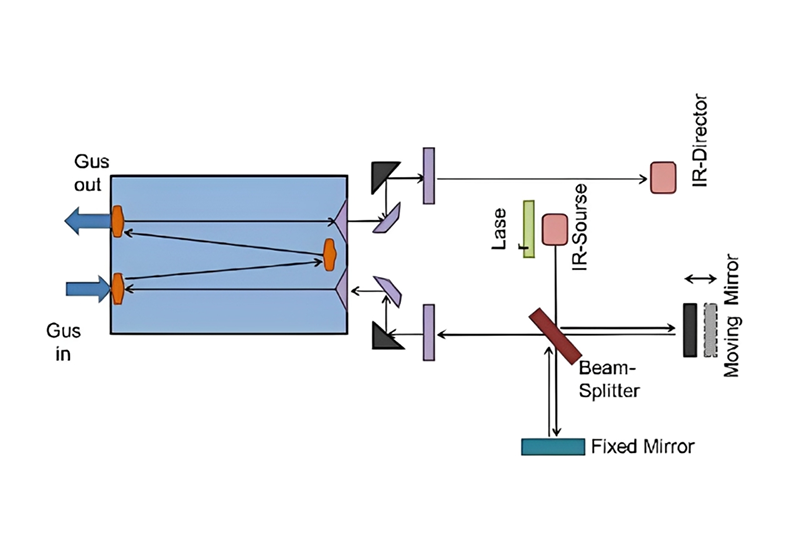-
Telephone:400-000-0000Telephone:400-000-0000
-
wechat:abcdefg
-
Email:sales@ahxsgd.com

Fourier-transform infrared spectroscopy (FTIR) is a technique used to obtain the infrared absorption and emission spectra of gases. This technique irradiates a beam of light containing many frequencies at a time and measures how much light is absorbed by the sample. Next, the beam of light is modified to another set of frequencies to provide the second data. The process is repeated multiple times. The computer then integrates all the data and deduces the absorbance at each wavelength of light.
The beam described above is the beginning of a broadband light source. This light source contains spectra at all wavelengths, and Fourier transform spectroscopy uses this light for measurement. Light strikes the Michelson interferometer-made up of a configuration of mirrors, one surface of which is moved by a motor. When the mirror moves, light of each wavelength in the beam will be periodically blocked and transmitted through the interferometer due to the influence of wave interference. Different wavelengths have different rates, so at each moment, the beam produces a different spectrum after passing through the interferometer.
As mentioned earlier, computer processing requires converting the raw data (absorbance at each mirror position) into the expected result (absorbance at each wavelength). During the process, the transformation required is a common algorithm called the Fourier transform (hence the name "Fourier Transform Infrared Spectroscopy"), and the raw data is also called the "interferogram."

Technical advantages:
1. Multi-channel transmission of signals can measure all information at all frequencies, greatly improving the signal-to-noise ratio.
2. High accuracy and high resolution.
3. High output energy and wide spectral range.

